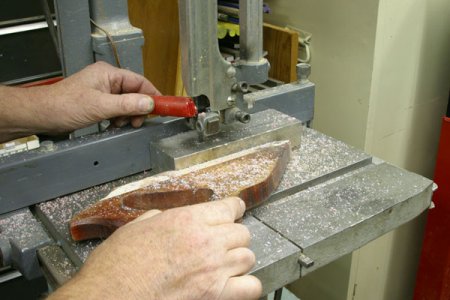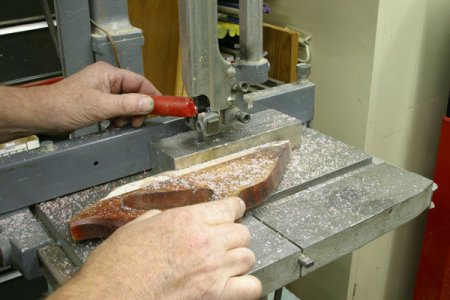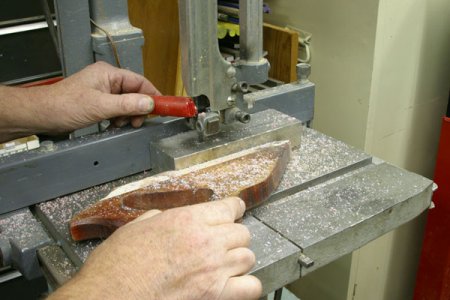A
Andre
Forum Guest
Register Today
Everything else has been covered. My Hardinge lathe starts up so fast,I once wasn't paying attention,and started it backwards. The metal was spinning so fast,I couldn't tell the rotation direction. Then,I wondered why I couldn't get the tool to cut. Only momentary,but,stuff can happen,even after many years as a machinist!!
Your bandsaw needs to go 75 FPM to cut steel .
I needed to use a dovetail cutter, and it had a 5/8" shank. My 7 Brown and Sharpe taper mill only holds 1/2" so I used a friends BP. Plopped a half inch endmill in there (had to thin down the stock first) so I got familiar with all the knobs on the head, swapped the speed direction lever to hi and went away. For the life of me I couldn't figure out why it wouldn't cut and the chips were welding to the edge. Dumbo moment, didn't know I had to swap the fwd/rev button when moving out of backgear....
He was watching over my shoulder the whole time.....if he eventually hires me I hope he doesn't remember that moment!
After that it was fun running a 1 1/4" dovetail cutter 2200 RPM :biggrin: Given it was nearly 3 times the recommended speed for that cutter, it left a great finish and the cutter was still scalpel sharp after.



